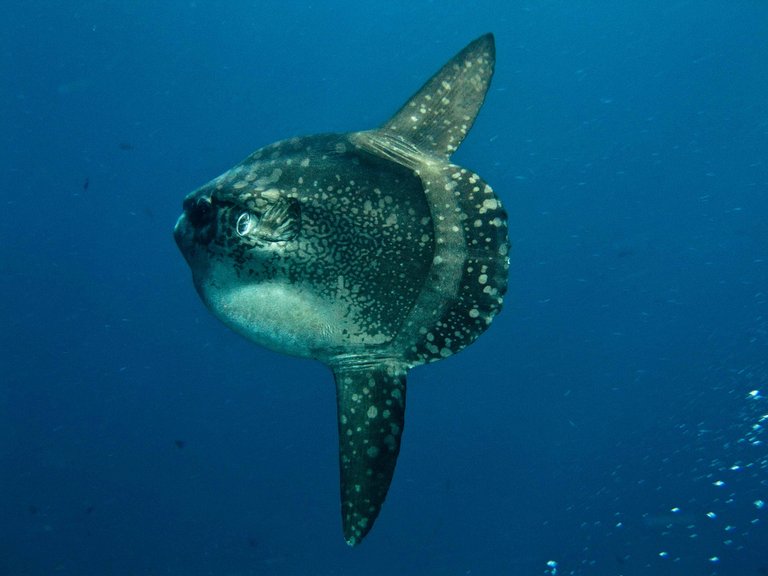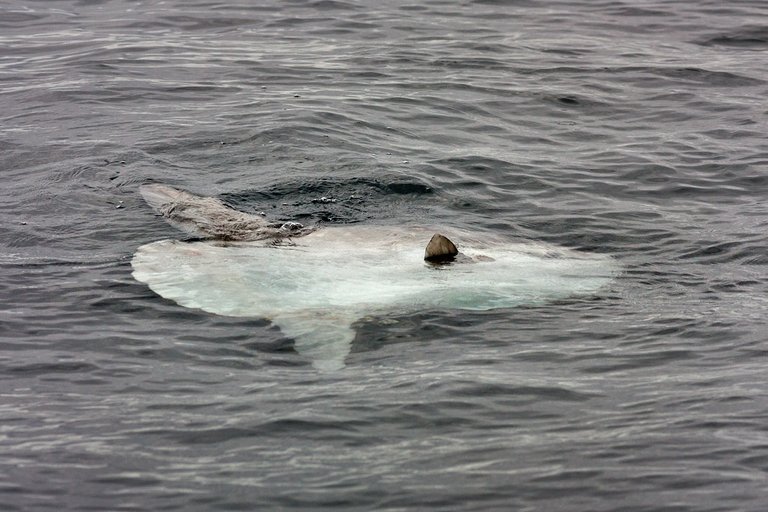Sincerely I have always known that the Ocean Sunfish (Mola Mola) is was the largest bony fish in the Ocean but what I didn't know was that it had been overtaken by its closest relative, the Southern/Bump-head Sunfish (Mola alexandrini). Because this fish is the second largest now doesn't mean it is not large because it take a lot to hold on to that title for a very long time.
Some can weigh up to 1 ton, and the heaviest of it weighed over 2 tons and a 3.3m in diameter forming almost a perfect circle. If we are to compare its weight, then we can say it is as heavy as a large giraffe. The Southern Sunfish is currently the largest bony fish and it weighs over 2.7ton.
This fish is part of the family of Molidae related to other fishes like Porcupine fish, Pufferfish, Boxfish, Triggerfish, Spikefish, and Filefish, and unlike what you might think that they have been for a very long time, they appeared first in the ocean some 50 million years ago and if that is quite recent then I wonder what old would be. They are a part of five extinct fish species. The fish has a bulging head, big eyes, and four beak-like teeth and pharyngeal jaws which are located in their throat. Many Bony fishes over the years have evolved to having pharyngeal teeth which are used to capture food, and separate wanted from unwanted foods.
Sunfish consume a lot of jelly fish and this fish make up a large portion of their diet and they use their pharyngeal jaws to capture them. Whatever the sunfish isn't going to consume is being pushed out from its mouth. It uses its jet force to propel itself away from predators. The fish moves at 3km per hour with their fins and their pseudo-tail.
The fish can be found in tropical and temperate waters but can still survive in water temperatures as low as 2 degrees Celsius. As you would expect them to have association with the sun, Sunfish usually lay on water surface to get sun rays and they do this laying on their sides and this allows for birds to feed the predators on their bodies and to prevent the birds from plucking out their eyes, they are equipped with muscles that help them pull their eyes into their sockets. While the birds eat up the parasite, they can sometimes eat up the flesh of the sunfish but those are small bites compare to the ones from sharks, sea lions, and Orcas and they really do not worry too much.
Scientist still do not know much about the sunfish or maybe they know but are yet to publish a lot about them including how long they grow, how long they live in the wild, their population size, where they spawn and so on but we know that they reproduce by laying eggs and the female can lay up to 300 million eggs during breeding seasons and the baby sunfish start their live as larvae only half a centimeter in size.
Reference
https://www.oceansunfish.org/evolution.php
https://www.oceansunfish.org/Rev%20Fish%20Biol%202010.pdf
https://www.necropsymanual.net/en/teleosts-anatomy/skeleton-and-musculature/
https://www.researchgate.net/publication/316721554_Satellite_Tracking
https://www.sciencedirect.com/science/article/abs/pii/S0022098121001416
https://onlinelibrary.wiley.com/doi/full/10.1111/joa.12842
https://pmc.ncbi.nlm.nih.gov/articles/PMC6081505/#joa12842-bib-0031
https://besjournals.onlinelibrary.wiley.com/doi/full/10.1111/1365-2656.12346



